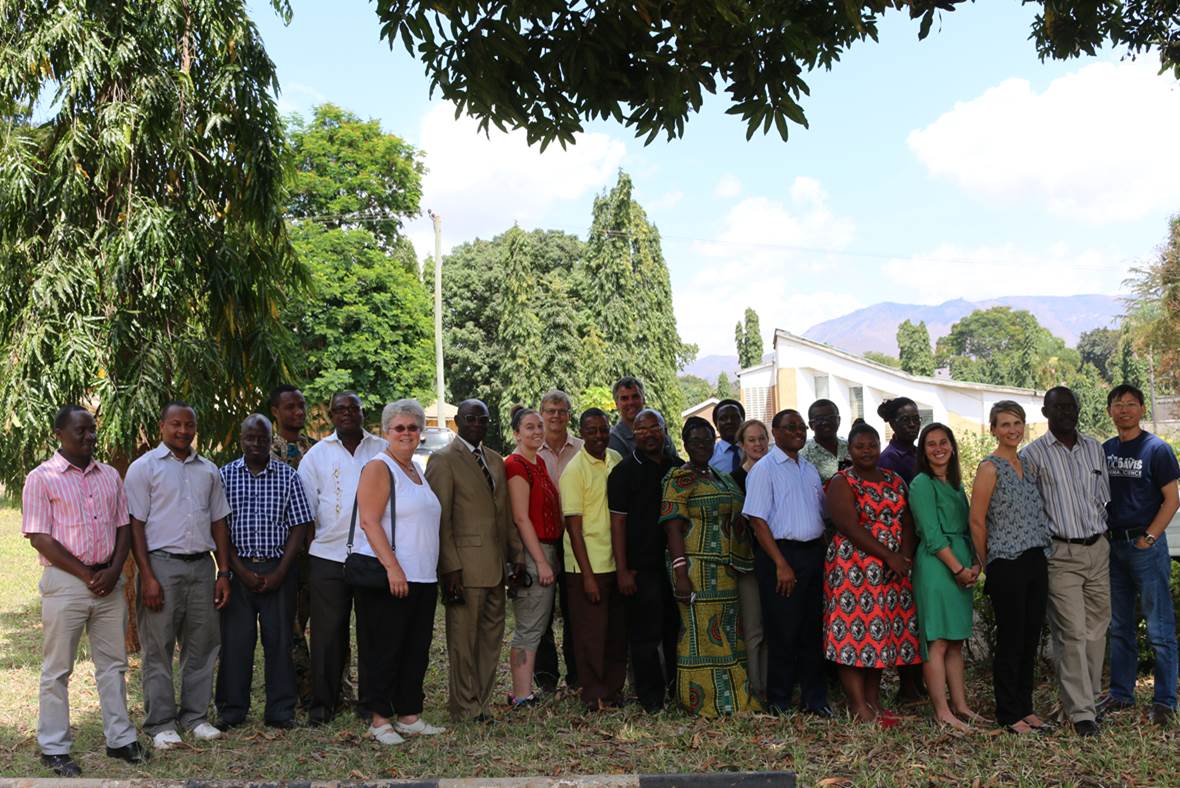News 2015-09-11: Success Story from Annual Meeting
Poultry experts identify key criteria for effective breeding and distribution of improved chicken breeds for smallholder farmers in Africa
Eighty percent of poultry producers across the African continent are smallholder family producers who raise small flocks of chickens in order to eat, sell, or gift their eggs and meat. Although chicken husbandry is popular, offering a venture that is inexpensive, low-labor, and environmentally nonintrusive, farmers face major losses due to disease. Newcastle Disease especially has made devastating hits on smallholder farmer flocks across the continent. The USAID Feed the Future Innovation Lab for Genomics to Improve Poultry (GIP) is in its second year of a five-year program working to address this issue by applying advanced genetics and genomics approaches to sustainably enhance innate resistance to Newcastle Disease, as well as heat stress in chickens.
This research program relies on the cutting-edge science to develop an improved genetic strain of indigenous breeds of chickens. But as important as this innovation could be for the scientific world, it is equally important that the end-product is relevant for the industry or the final user. A bird that is resistant to Newcastle Disease and adapted against heat stress will indeed be attractive for these entities, but will also need to encompass other qualities that are relevant to the industry and end users’ culture and environment. Additionally, there will need to be an efficient method to distribute these improved chickens to smallholder family poultry producers in Africa.
On September 11, 2015 the USAID Feed the Future Innovation Lab for Genomics to Improve Poultry facilitated a working group meeting at Sokoine University of Agriculture in Morogoro, Tanzania to enhance our understanding of how best to ground this scientific innovation into the real world. This meeting brought together experts from across the poultry value chain, from researchers to breeders to distributors.
Among the group were invited guest speakers Ms. Patricia Aboe of the Council for Scientific and Industrial Research (CSIR), Ghana; Dr. Jean-Claude Fotsa, Editor-in-chief of Family Poultry Communications and Research Professor of the Institute of Agricultural Research for Development (IRAD), Cameroon; and Dr. Humphrey Mbugua of the Kenya Poultry Breeders Association, Kenya. Each speaker presented on poultry breeding and distribution projects that they have worked with in their respective countries, all emphasizing the importance of providing a product that is relevant to small family poultry producers. “The major problem,” Dr. Fotsa explained, “is that (new) genetic materials do not take into consideration farmers preferences for taste, flavor, skin color, size, etc.”. If the improved chicken does not meet key criteria demanded by local farmers, it will not be a useful, or desirable, product.
Also in attendance were local Tanzania poultry breeders and distributors. Mr. Manase Mrindwa is the owner of Msigani Poultry near Dar es Salam, Tanzania where he and his wife run a hatchery that produces and sells up to 7,000 day-old chicks each week. His participation was especially relevant when the discussion turned to business models of breeding and distributing chickens to smallholder family poultry producers. The Msigani model, along with six other models were analyzed and documented.
This collaborative knowledge will be essential to develop a chicken breeding and distribution plan that will put Newcastle Disease and heat resistance chickens into the hands, or flocks, of smallholder family poultry producers in African countries. During the next year, the workshop participants will continue to advise the GIP team on identifying the key criteria to making an improved breed a desirable and accessible product.

